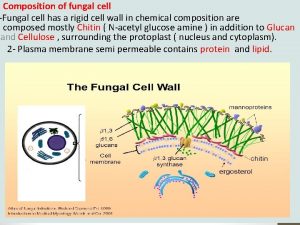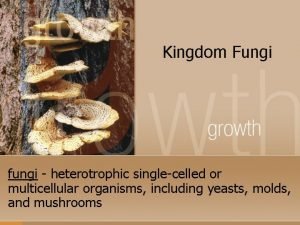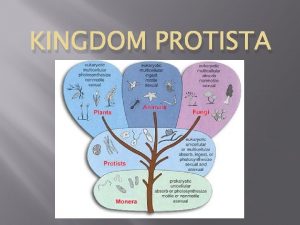Protista single celled organisms Euglena Microscopic onecelled organisms








- Slides: 8

Protista single celled organisms

Euglena • Microscopic, one-celled organisms • 150 species of Euglena Chloroplast • live in fresh water, and are especially common in warm seasons • Spindle-shaped bodies 0. 025 to 0. 254 millimeters. Flagellum

Euglena • Green because they • Use a flagellum (a contain chlorophyll whip like which allows them to appendage) that produce food sticks out from the through body, to move photosynthesis • Reproduce rapidly • Some species also and can be studied eat tiny particles of under an ordinary living matter. microscope.

Why is Euglena not a plant or animal? • Euglena has chloroplast which means it cannot be an animal and it has a flagellum and an eye spot which means it cannot be a plant. • Chloroplasts enable cells to make their own food so this is a feature of plant cells but euglena can detect light with the eye spot and move towards it with the flagellum and no plants can do this.

Amoeba • Large single celled organisms • move by cytoplasmic streaming - a pseudopod projects forward and the cytoplasm flows into it • they engulf small food particles and smaller cells

Amoeba • Engulfs food and water particles • pinocytosis is the engulfment of liquid droplets • phagocytosis is the engulfment of larger food particles • the amoeba does this by forming false feet that flow around the object • white blood cells do the same thing

Amoeba

Paramecium • Single celled organism that can be seen under a microscope • Lives in fresh water so needs a contractile vacuole • Moves by cilia rhythmically beating • Oral groove that is used to take in food particles













